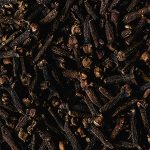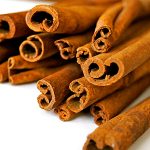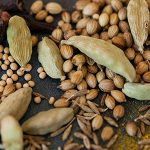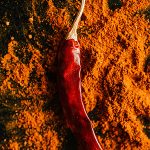Mount Kilimanjaro, Africa’s tallest peak at 19,341 feet (5,895 meters), is a coveted destination for adventurers and trekkers worldwide. Located in Tanzania, this majestic mountain offers several routes to its summit, each with its unique… More
Have You Ever Thought About Climbing Kilimanjaro?
Kilimanjaro stands as a majestic icon on the Tanzanian horizon. Each year it entices adventurers from around the globe to embark on a journey of a lifetime. Rising 19,341 feet above sea level, this dormant volcano offers not just a physical challenge, but a spiritual and mental odyssey for those brave enough to undertake it. In this article, we delve into the allure of Kilimanjaro, exploring its history, its challenges, the rewards it offers, and the essential considerations for anyone who has thought about climbing Kilimanjaro.

Understanding Kilimanjaro
Nestled within Tanzania’s Kilimanjaro National Park, Kilimanjaro is a unique geological wonder. Comprising three volcanic cones-Kibo, Mawenzi, and Shira—classified as a stratovolcano. It was formed by successive eruptions over millennia. Kilimanjaro’s summit is perpetually capped with snow and ice despite its proximity to the equator. This is a striking contrast to the surrounding African savannah.
The allure of Kilimanjaro transcends its geological marvels. It is rich in biodiversity-from its lush rainforests, alpine meadows, and arctic-like summit glaciers. It also supports a diverse array of flora and fauna. Furthermore, Kilimanjaro holds cultural significance for the indigenous Chagga people, who have long revered it as a sacred site.
Challenges of Climbing Kilimanjaro
Ascending Kilimanjaro is no small feat. While it lacks technical climbing requirements, its altitude and unpredictable weather pose formidable challenges. Altitude sickness, characterized by symptoms such as headache, nausea, and fatigue, is a genuine concern for climbers. Moreover, Kilimanjaro’s climate varies drastically from the equatorial base to the frigid summit, demanding adequate gear and preparation for temperature extremes.
The ascent presents physical challenges, particularly during the final push to the summit. Climbers must navigate steep, rocky terrain and endure freezing temperatures and oxygen-thin air. The relentless ascent tests both physical endurance and mental resilience, requiring unwavering determination to reach the coveted Uhuru Peak.
Rewards of Conquering Kilimanjaro

Despite the obstacles, summiting Kilimanjaro is an unparalleled achievement. Climbers are rewarded with breathtaking vistas and a profound sense of accomplishment. The sunrise at Uhuru Peak, illuminating the vast African plains below, is a sight few will forget. Moreover, the camaraderie forged among fellow climbers and the guidance of experienced guides enrich the journey. These newfound friendships foster lasting memories.
Beyond personal fulfillment, climbing Kilimanjaro offers a deeper connection to nature and oneself. The solitude of the mountains, far removed from the distractions of modern life, encourages introspection and mindfulness. Many climbers describe a profound sense of awe and gratitude upon witnessing Kilimanjaro’s grandeur.
Practical Considerations
Route: Before embarking on a Kilimanjaro expedition, thorough preparation is essential. Choosing the right route is crucial, with options ranging from the popular Marangu route to the more challenging Machame and Lemosho routes, each offering unique experiences and scenery.
Operator: Additionally, selecting a reputable tour operator with experienced guides is paramount for ensuring safety and success.
Fitness: Physical fitness is another critical factor in preparing for Kilimanjaro. While technical climbing skills are not required, adequate cardiovascular endurance and strength are necessary to endure the rigors of the ascent.

Incorporating a regimen of aerobic exercise, strength training, and hiking with a weighted pack can help build the necessary fitness level.
Acclimatization: Furthermore, acclimatization is key to mitigating the risk of altitude sickness. Climbers should plan for gradual ascent, incorporating rest days and altitude adjustment hikes into their itinerary. Hydration, nutrition, and proper rest are also vital components of acclimatization and overall well-being throughout the expedition.
Final Thoughts
Climbing Kilimanjaro is a journey of self-discovery and adventure, offering unparalleled rewards for those bold enough to undertake it. From its awe-inspiring natural beauty to the physical and mental challenges it presents, Kilimanjaro beckons adventurers to push beyond their limits and reach new height—both literally and metaphorically.
While the path to Uhuru Peak may be arduous, the experience is transformative, leaving an indelible mark on the hearts and minds of all who dare to summit Africa’s tallest peak.
So, have you ever thought about climbing Kilimanjaro? Perhaps now is the time to turn that dream into reality and embark on the journey of a lifetime.
Original article posted on Kilimanjarosunrise.com
The Crucial Role of Hydration on Mount Kilimanjaro
Mount Kilimanjaro entices adventurers with its majestic slopes and breathtaking vistas. However, beneath its allure lies a formidable challenge: altitude. As climbers ascend, the risks of altitude sickness heighten. This makes adequate hydration not just a comfort but a vital component of a successful climb. In this article, we delve into the significance of staying hydrated on Kilimanjaro. We also cover how it can spell the difference between reaching the summit triumphantly or succumbing to altitude-related ailments.
Understanding Altitude and Dehydration

Mount Kilimanjaro rises approximately 19,341 feet above sea level. Its peak is shrouded in clouds. As climbers ascend, the air becomes thinner. This makes it harder to breathe and causes a decrease in oxygen saturation levels. This decrease in oxygen availability can lead to altitude-related illnesses such as acute mountain sickness (AMS), high-altitude pulmonary edema ( HAPE), and high-altitude cerebral edema (HACE). Dehydration exacerbates these risks.
At higher altitudes, the body loses water and electrolytes at an accelerated rate through respiration, sweating, and increased urine output. Dehydration not only impairs physical performance but also hampers the body’s ability to acclimatize to the altitude, making climbers more susceptible to altitude sickness.
The Importance of Hydration

Hydration is not merely about quenching thirst; it is about maintaining the body’s fluid balance to support essential physiological functions. On Mount Kilimanjaro, where the air is thin and oxygen is scarce, staying hydrated is paramount for several reasons:
- Oxygen Transport: Adequate hydration ensures that the blood remains sufficiently fluid, allowing for the efficient transport of oxygen to vital organs and tissues. This is crucial in mitigating the effects of altitude on oxygen saturation levels.
- Acclimatization: Proper hydration supports the body’s acclimatization process by aiding in the production of red blood cells, which help carry oxygen more efficiently. Well-hydrated climbers are better equipped to adapt to the altitude and reduce the risk of altitude sickness.
- Temperature Regulation: Climbing Kilimanjaro involves exposure to varying temperatures, from scorching sun at lower altitudes to freezing cold at higher elevations. Hydration plays a key role in regulating body temperature, preventing overheating during exertion and hypothermia in cold conditions.
- Muscle Function: Dehydration can lead to muscle cramps and fatigue, compromising physical performance and increasing the risk of accidents or injuries on steep and rocky terrain. Proper hydration ensures optimal muscle function, enhancing endurance and coordination.
Strategies for Hydration on Mount Kilimanjaro

Given the challenges posed by altitude and physical exertion, climbers must prioritize hydration throughout their ascent. Here are some strategies to help maintain optimal hydration levels on Mount Kilimanjaro:

- Drink Plenty of Water: Aim to drink at least 3–4 liters of water per day. The guides will tell you at the trip briefing each evening how much to drink the next day. Hydration bladders or water bottles with insulation sleeves can help prevent water from freezing at higher elevations.
- Electrolyte Replacement: Along with water, replenish electrolytes lost through sweat by consuming electrolyte-rich drinks or electrolyte tablets. This helps maintain the body’s electrolyte balance and prevents hyponatremia. Hyponatremia is a condition characterized by low sodium levels.
- Monitor Urine Color: Pay attention to the color of your urine; clear to pale yellow urine indicates adequate hydration, while dark yellow urine may signal dehydration. Aim for light-colored urine throughout the climb.
- Hydrate Before Symptoms Occur: Don’t wait until you feel thirsty to drink water, as thirst is a late indicator of dehydration. Drink regularly throughout the day to stay ahead of fluid loss.
- Limit Caffeine: Limit consumption of caffeine, such as coffee or tea. They can contribute to dehydration and exacerbate altitude-related symptoms.
- Eat Hydrating Foods: Consume foods with high water content, such as fruits (e.g., watermelon, oranges) and vegetables (e.g., cucumbers, tomatoes), to supplement your fluid intake.
- Listen to Your Body: Pay attention to signs of dehydration or altitude sickness, such as headache, nausea, dizziness, or fatigue, and take appropriate measures, including resting and rehydrating.
- Listen to the Guides: The guides will continually say “Maji Maji” or sip sip. Drink when they say to.
Final Thoughts
Scaling Mount Kilimanjaro is a remarkable feat that requires careful preparation and perseverance. Central to a climber’s success is the maintenance of proper hydration on Mount Kilimanjaro, throughout the ascent. By understanding the importance of staying hydrated and implementing effective hydration strategies, climbers can minimize the risks associated with altitude and maximize their chances of reaching the summit safely.
Remember, on Kilimanjaro, the journey is as much about conquering the mountain as it is about respecting its formidable power and the body’s need for hydration amidst its towering heights.
Originally published at https://kilimanjarosunrise.com
What Do I Need to Know to Climb Kilimanjaro?
Climbing Mount Kilimanjaro is an exhilarating adventure, but it requires thorough preparation and knowledge to ensure a safe and enjoyable experience. Here’s what you need to know to climb Kilimanjaro:

Physical Fitness

Kilimanjaro is Africa’s tallest peak, standing at approximately 19,341 feet above sea level. While technical climbing skills are not required, a good level of physical fitness is essential. Regular cardiovascular and endurance training, such as hiking, running, and stair climbing, can help prepare you for the demands of the climb.
Acclimatization
Altitude sickness is a real concern when ascending Kilimanjaro. Proper acclimatization is crucial to minimize the risk of altitude-related illnesses such as altitude sickness, HAPE (High Altitude Pulmonary Edema), and HACE (High Altitude Cerebral Edema). Choose a climbing route with a gradual ascent profile and plan for sufficient rest days during the climb to allow your body to adjust to the altitude.
Choosing a Route

Kilimanjaro offers several climbing routes, each with its characteristics in terms of scenery, difficulty, and acclimatization profile. The Marangu and Rongai routes are popular options. However, the Machame and Lemosho routes are known for their scenic beauty and higher success rates. Research each route carefully to determine which one best suits your preferences and abilities.
Guided vs. Independent
While it’s possible to climb Kilimanjaro independently, it’s also illegal. Climbers need to join guided expeditions led by experienced guides. A reputable guide service will provide knowledgeable guides, support staff, and equipment. Furthermore, they will logistically support your trek, know safety protocols, and make sure you successfully summit Kilimanjaro. Make sure to choose a licensed and certified guide service with a good track record.
Packing and Gear
Packing the right gear is essential for a successful climb. This includes appropriate clothing for varying weather conditions (from hot and humid at the base to cold and snowy at the summit), sturdy hiking boots, a warm sleeping bag, a good quality backpack, sunscreen, sunglasses, and a refillable water bottle or hydration system. Check with your guide service for a detailed packing list tailored to your chosen route and the time of year.

Permits and Regulations
Climbing Kilimanjaro requires a permit, which can be obtained through your chosen guide service. Be sure to secure all necessary permits and adhere to park regulations and guidelines to minimize your impact on the environment and ensure a safe and enjoyable experience.
Safety Precautions

Kilimanjaro is a challenging climb, and safety should always be a top priority. Listen to your guides, stay hydrated, and pace yourself. The guide may have you turn back if you experience symptoms of altitude sickness or other health concerns. Proper training, acclimatization, and preparation can help mitigate risks and increase your chances of reaching the summit safely.
Final Thoughts
By thoroughly researching and preparing you should have everything you need to know to climb Kilimanjaro. By listening to the guides and reading the supplied materials you can increase your chances of success. Make your dream a reality. Stand atop Kilimanjaro and enjoy the breathtaking beauty of Africa’s highest peak while staying safe and healthy.
Original article posted on Kilimanjarosunrise.com
LUXlife Magazine: Best Boutique Climbing and Trekking Operator
We are proud to announce that we were nominated and won the LUXlife Magazine Spring 2024 Travel & Tourism Awards 2024. We won for the Best Boutique Climbing & Trekking Tour Operator. See here: https://www.lux-review.com/winners/kilimanjaro-sunrise/
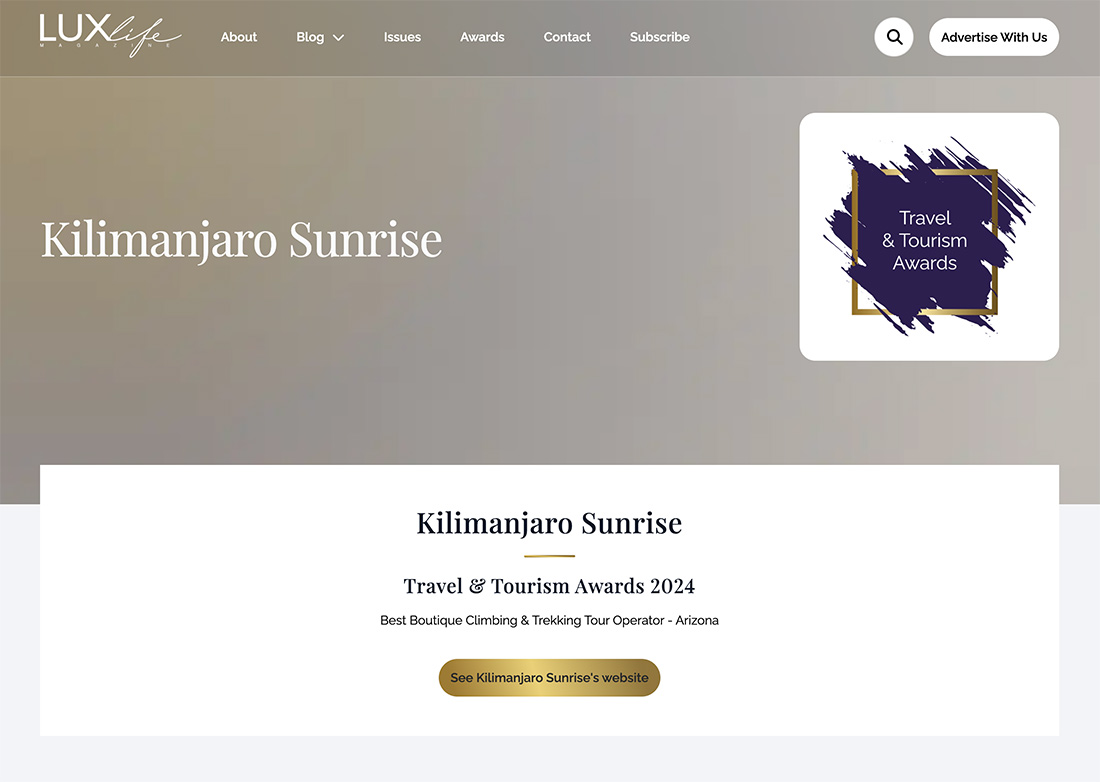
Travel & Tourism Awards
LUXlife proudly welcomes you to the eighth annual Travel and Tourism Awards. This award programme exclusively recognises and celebrates the leaders in the international travel industry.
The travel and tourism industries have made a strong comeback! After enduring the effects of previous years, 2023 has brought back a sense of normalcy. It is predicted that 2024 will continue this trend and build upon it. Economic struggles and doubts about industry recovery are now a thing of the past. The travel industry is operating at full capacity and surpassing expectations.
Now is the perfect moment to acknowledge and honour the efforts of dedicated businesses in the travel sector. From hotel proprietors to safari excursion leaders and travel advisors, this expansive industry is always pushing limits and achieving new successes. The Travel and Tourism Awards 2024 provide an excellent platform to highlight these innovators and showcase them on a worldwide level. Thus, regardless of the industry sector a company belongs to, the Travel and Tourism Awards 2024 offer an outstanding opportunity.
The travel industry is currently undergoing a period of substantial growth, which is anticipated to continue for the next ten years. This growth can be attributed to the industry’s remarkable ability to adapt to shifting consumer trends and ideals. Sustainable tourism has emerged as a popular choice for many consumers, while solo travel has gained increasing popularity among younger generations. Moreover, younger generations prefer holidays that offer self-discovery and adventure, while luxury holidays and wellness retreats are also on the rise. The luxurious travel category, which includes travel consultants and private airlines, is a highly lucrative aspect of the industry. The use of digital booking platforms has also become more prevalent, resulting in the success of travel technology. Additionally, travel ads have become a significant aspect of the industry’s promotion strategy. Overall, the travel and tourism industries are currently experiencing an exceptional period of economic growth, and experts predict that this trend will continue for the foreseeable future.
The Travel and Tourism Awards 2024 accepts nominations from individuals and third parties. Our experienced professionals evaluate all nominees based on their quality and achievements, without bias towards their size or location. The selection process is fair and impartial, ensuring that all candidates are objectively evaluated based on merit. If you know of a business worthy of recognition for its achievements, please feel free to submit a nomination.
The Travel and Tourism Awards 2024 intends to honour the top-performing companies that have shown exceptional commitment to their industry. As the tourism sector is expected to prosper in the upcoming years, this event presents an ideal chance to acknowledge the most deserving businesses. LUXlife is privileged to celebrate and give recognition to these companies by awarding them for their remarkable achievements.
We wish all the nominees the best of luck!
Your Safety on Kilimanjaro is Our Mission
Embarking on a journey to conquer Kilimanjaro is undoubtedly an exhilarating adventure. However, amidst the thrill of summiting Africa’s highest peak, safety should always remain the utmost priority. At Kilimanjaro Sunrise, your safety on the mountain is our primary concern, and we spare no effort in ensuring a secure and memorable experience for every trekker.

Expert Guides

Our experienced guides are the backbone of your safety throughout the expedition. Trained to handle any situation, they serve as the mountain’s frontline doctors, equipped with Wilderness First Responder certification and years of invaluable experience. Rest assured, if illness strikes or danger looms, our guides possess the expertise to make critical decisions regarding your journey, prioritizing your well-being above all else.
Safety Measures and Daily Health Checks

Preventing altitude sickness, HAPE (High Altitude Pulmonary Edema), HACE (High Altitude Cerebral Edema), or any other illness is paramount. To safeguard against these risks, we implement stringent safety protocols, including daily health checks commencing from your trip briefing and continuing throughout your ascent. Our guides closely monitor your physical condition, ensuring early detection of any symptoms and prompt intervention when necessary.
First Aid Preparedness

While our guides are extensively trained in first aid, we strongly advise all trekkers to carry a personal first-aid kit. Supplementing our comprehensive medical provisions, your kit should include essentials such as blister plasters, antiseptic cream, bandages, supports for joints, pain relievers like Ibuprofen, anti-diarrheal medication (Let your guide know before taking any medication), rehydrating powders, lip balm, Vaseline, throat lozenges, and anti-fungal cream for foot care. Pack these items in separate Ziploc bags to prevent leaks and ensure accessibility during emergencies.
Flexibility and Safety Assurance

At Kilimanjaro Sunrise, safety remains non-negotiable. We reserve the right to make necessary adjustments to, or even cancel, aspects of your trip if safety and security concerns arise. Your well-being is our top priority, and we are committed to delivering a safe and rewarding expedition every step of the way.
Final Thoughts

Climbing Kilimanjaro is a monumental endeavor. Ensuring your safety is a responsibility we take seriously at Kilimanjaro Sunrise. With our experienced guides, rigorous safety measures, and first-aid preparedness, we strive to provide a secure and unforgettable trekking experience. Trust us to prioritize your safety while you focus on fulfilling your dream of climbing Kilimanjaro.
Originally published at https://kilimanjarosunrise.com
How Much Does it Cost to Climb Kilimanjaro?
Enthusiasts and prospective trekkers frequently inquire about the financial investment to climb Kilimanjaro. The most frequent question is “How much does it cost to climb Kilimanjaro?” It’s a valid inquiry, particularly when trekking is just walking. This, combined with Tanzania—the country where Kilimanjaro is located—is one of the world’s poorest countries.

To address this question, it’s essential to understand the costs associated with planning and following through with a Kilimanjaro trek. The trek is the most significant portion of the expenses incurred during a trip to Tanzania.
At the lower end of the cost spectrum, the bare minimum cost to climb Kilimanjaro starts at approximately $1,200. However, this budget-friendly option often involves direct negotiations with local agencies, selecting basic routes like Marangu, and opting for shorter trek durations. Usually 5 days. Deviating from these parameters increases costs. A more realistic budget falls within the range of $2,500 to $3,500 per person for a decent trekking experience.
Before delving further into the specifics of what each price range entails, it’s crucial to dispel the notion that a higher price automatically equates to a greater likelihood of summiting Kilimanjaro. While increased costs may ensure access to safer trekking conditions, experienced guides, and better emergency equipment, they do not guarantee a successful summit bid. Rather, they enhance the prospects of a safe descent in case of adverse circumstances.
Once on the mountain, you won’t need to pay for anything else throughout the trek except tipping at the end.
Let’s explore the cost breakdown across different budget categories:
Budget Operators
$1,200–1,500 USD

The cheapest way to organize a climb is to just show up at Kilimanjaro International Airport. From there hop into a taxi to Moshi or Arusha. Look up local companies and start negotiating. Keep in mind, that you need to have confidence in your bargaining skills.
Even at this bargain-basement price threshold, you should still get your park fees paid for. The price should also include all your meals on the mountain, a porter to carry your bag, and a guide to lead you. Transfers to and from the mountain should also be included. However, transportation at this budget level can be unreliable. Odds are you’ll have to find your way back to town after your trek.
If you book your trip in Moshi it is still possible to get a trek for $1,200. But this trek will be for just five days. We don’t recommend this and with a company that we won’t be able to recommend either. In short, it won’t be possible to guarantee the reliability or honesty of any company charging so little.
Furthermore, at this price, the cost of climbing Kilimanjaro won’t just be yours to bear. The company’s treatment of porters will be terrible. Their wages will be abysmal. If you decide to climb with one of these companies, you could always ease your conscience by giving higher tips. But then, of course, that negates any savings you have made by opting for the cheaper company in the first place.
$1,500–1,800 USD
At this price point, there’s a slight improvement. But only a slight one. You can still forget about finding a company that treats its mountain crew fairly or pays them well.
You’ll also have to do a five-day trek. But as we mentioned earlier, we don’t recommend a five-day trek. It’s simply too dangerous. It doesn’t allow you enough time to acclimatize safely. Read more here: https://kilimanjarosunrise.com/how-to-safely-summit-mount-kilimanjaro/
If you have only $1,500 or less for your trek, then our advice is to delay your trip. Save up some more money, and try another year.
$1,800–2,500 USD
At these prices, you will get a lot more choices. You should find several companies that are partners with the Kilimanjaro Porters Assistance Project (KPAP). In other words, you’ll have some reassurance that they will treat their staff well. The quality of the treks in this price bracket starts to improve exponentially too.
Companies may start to provide private toilets and dining tents, for example. The quality of food will improve as will the quality of the guides. Furthermore, they should also all carry oxygen with them.
If you’re on a tight budget, this is the price bracket to aim for. You will still probably have to take a 6-day trek rather than the preferred 8-day trek. The longer the trek, the greater your chance of acclimatizing safely and reaching the summit. The food, equipment, and service may not be of the highest quality either. But overall everything should be “good enough”.
Your trek should run reasonably well. Any dietary requirement you may have should be accommodated. Whether successful or not, you should return from your climb happy with the experience.
Mid-Range Operators
$2,500–3,300 USD

This is where the price point changes from Budget Operators to Mid-Range Operators. There are several very good value choices here. Most of the larger Tanzanian companies fall into this category. Several have their hotels now. One or two even have a lodge in one of the national parks. This means that you could be in their care from the moment you arrive at the airport until you fly home.
There’s a lot of competition in this price bracket. Some companies, therefore, try to distinguish themselves. This they may do by, for example, offering unusual routes. Or perhaps by offering packages that include a safari or sightseeing tour.
Some companies in this bracket will be KPAP partners. In other words, they treat their porters well and pay a fair wage. Some operators will also have guides who are WFR (Wilderness First Responder) certified. Which means they’ll have advanced first-aid training.
Some of these companies have ownership stakes held by individuals from Western countries. This fact brings comfort to some, who appreciate having someone they can relate to involved in the company. On the other hand, other trekkers favor companies that are entirely Tanzanian-owned.
One thing that improves in this price bracket from budget operators is that the safety procedures tend to be superior. Often trekkers will be monitored daily with a pulse oximeter. This measures the oxygen saturation in your blood which is a useful way of telling how well someone is coping with altitude. They should all have well-rehearsed evacuation procedures too. They should be able to tell you about it before you’ve even booked your trek.
Despite all their efforts at standing out from the crowd, usually, there can be little to distinguish between the companies in this bracket. Often people end up choosing to go with a company simply because they answered their emails more promptly. Or that they just happened to build a better rapport with them. Or they chose a company simply because it had a public trek advertised for the dates they wanted, and on the route they wanted too.
It’s fair to say that in this price bracket, you should be happy with pretty much everything in your trek package.
Luxury Operators
$4,000 USD and Above

This is the Luxury Operator price category. By the time you get to this price, things start to get very interesting. Most of the companies in this price bracket will be able to get away with charging this much because they are Kilimanjaro specialists. Some will have worked on the mountain for decades. Others will rightly boast of having established new routes on the mountain. Still others will boast of having highly trained and experienced guides, with hundreds of treks under their belt and a WFR (Wilderness First Responder) certification.
Most companies will be KPAP partners. If they charge this much and aren’t KPAP partners, then they need to explain why.
One or two companies may also offer such luxuries as showers, inflatable furniture in the dining tents, cots set up at each campsite, wifi hotspots, and smartphone chargers. These may sound like gimmicks, and indeed they are., but the companies in this price bracket should also be very good at the important things. They should cook exceptionally nutritious and tasty food on the mountain. They should have first-rate safety procedures and equipment. Their highly trained guides will speak excellent English. Most of the time they also have branded equipment, flags, and uniforms.
All these extra frills cost more, which is why you pay such a premium for their services.

Costs Off the Mountain
Aside from your trek cost, the main expenses of your trip will be:
- Flights — $900 and up.
- Obtain the required gear — varies
- Visas — $100 for US citizens
- Vaccinations (if necessary). May or may not be covered by insurance.
- Food and accommodation (lunch, dinner, and extra hotel nights)
- Safari — depends on the number of days and number of people
- Zanzibar — Depends on accommodations, travel, food, and excursions
- Trip Insurance — usually $200 and up
Away from the mountain and the other national parks, the most expensive place in Tanzania is Zanzibar.
Transport, food, and accommodation are pretty cheap in Tanzania, particularly in Moshi and Arusha.
Accommodation in Tanzania
Your trek operator should provide you with a couple of nights’ accommodation. After that, you can either book extra nights with them or opt to book accommodation yourself. Be careful if you choose your accommodations so you don’t end up in an unhygienic, seedy hotel.
At the other end of the spectrum, hotel rooms and luxury safari camps can go for $2,000 per night during the high season.
Food in Tanzania


Food in Tanzania is both delicious and inexpensive at restaurants and hotels. A decent meal starts at around $10.00.
We recommend avoiding street vendors since no one regulates their sanitary standards.
Final Thoughts
Whatever your budget is for climbing Kilimanjaro, keep in mind you get what you pay for. If safely summiting Kilimanjaro is your main goal then you’re going to pay at least $2,500 for the trek. If you want to have a greater chance of making the summit, book a longer route like the 8-day Lemosho or 9-day Northern Circuit routes. Both of these routes have an over 90% summit success rate.
If you want to know how we stack up against other companies. Read more here: https://kilimanjarosunrise.com/best-kilimanjaro-company/

Embark on a journey with Kilimanjaro Sunrise and experience the epitome of luxury while paying a fraction of the cost to climb Kilimanjaro. While we may not boast flashy branding, lavish showers, or inflatable furniture, we prioritize what truly matters: safety, exceptional food, top-notch equipment, and a team of seasoned experts to guide you every step of the way. Elevate your trekking experience with Kilimanjaro Sunrise and discover the remarkable difference that superior quality and service can make. Book now and ascend to new heights in style and comfort!
Original article posted on Kilimanjarosunrise.com
Why a Private Safari is Better than A Group Safari
The Serengeti and Ngorongoro Crater. Two iconic destinations in northern Tanzania. Beckon adventurers with their unparalleled natural beauty and abundant wildlife. A private safari through these breathtaking landscapes promises an intimate and exclusive experience. It can be tailored to your preferences and filled with unforgettable moments.

Introduction to the Serengeti and Ngorongoro Crater
The Serengeti National Park, spanning 30,000 square kilometers, is renowned for its endless plains and incredible wildlife, including the famous Great Migration. The Ngorongoro Crater, a UNESCO World Heritage Site, is a vast volcanic caldera harboring a stunning array of animals within its steep walls.
Private Safari vs Group Safari

Choosing a private safari over a set itinerary bus group safari offers a host of advantages. With a private safari, you have the freedom to craft your schedule and activities within reason. This ensures a personalized experience tailored to your interests and preferences. Unlike the rigid schedules of group safaris, where you may feel rushed from one location to another. A private safari allows you to immerse yourself fully in the moment. You’ll be able to stay longer at wildlife sightings or pause to appreciate the serenity of the African bush.
Additionally, the exclusivity of a private safari means you won’t have to contend with crowded vehicles or competing for the best views. This allows for a more intimate and immersive wildlife viewing experience. Whether it’s enjoying a leisurely hot lunch in the company of grazing antelope or embarking on a guided nature walk to uncover hidden wonders, a private safari offers a level of flexibility, comfort, and exclusivity. This will elevate your Serengeti experience to new heights.

This exclusivity extends to accommodations. Our private safari offers luxurious tented camps set in pristine wilderness areas. This provides a seamless blend of comfort and immersion in nature.
Introduction to the Serengeti

Located in northern Tanzania and extending into southwestern Kenya, the Serengeti National Park is one of Africa’s most renowned wilderness areas. It covers approximately 30,000 square kilometers. Its name, derived from the Maasai word “siringet,” translates to “endless plains”. It is a fitting description of its sprawling grasslands punctuated by rocky outcrops and acacia-dotted landscapes.
The Serengeti is perhaps best known for hosting the largest terrestrial mammal migration on the planet. Millions of wildebeest, zebras, and other herbivores traverse its plains in search of fresh grazing grounds. Beyond the migration, the park is home to an astonishing diversity of wildlife. Animals calling it home include the Big Five — lions, elephants, buffalo, leopards, and rhinoceroses. They roam freely with cheetahs, giraffes, hyenas, and an array of bird species.
Furthermore, a private safari ensures exclusivity and privacy, allowing guests to immerse themselves fully in the natural surroundings without the presence of other travelers.
Introduction to the Ngorongoro Crater

The Ngorongoro Crater, a UNESCO World Heritage Site, is a vast volcanic caldera harboring a stunning array of animals within its steep walls.

The Itinerary: A Journey of Discovery
A private safari begins with a meet-and-greet with your expert guide at your hotel. Depending on the length of the safari, itineraries may vary. They often include a mix of game drives and cultural experiences.
Each day on safari unfolds with the rising sun, as guests embark on morning game drives in a custom-designed 4×4 vehicle. It has been specially equipped for wildlife viewing. With the guidance of the knowledgeable and experienced safari guide, guests set out in search of the Serengeti’s iconic inhabitants. These include pride of lions lazing in the sun to herds of elephants browsing on acacia trees.

As the day progresses, guests will stop in a scenic (and safe) area to enjoy a hot lunch. Maasai villages to learn about traditional customs and culture. In the late afternoon, as the sun begins its descent guests will continue their game drive until the park closes. From there they will return to their tented camp for the night.
Luxurious Accommodations: Camping Under the Stars
One of the highlights of a private safari through the Serengeti is the opportunity to stay in luxurious tented camps nestled in pristine wilderness areas. Far from the crowds, these accommodations offer an unparalleled level of comfort and intimacy while immersing guests in the sights and sounds of the African bush.
Tented camps, often erected in secluded locations, feature spacious canvas tents equipped with plush furnishings, ensuite bathrooms, and private verandas overlooking the surrounding wilderness. Each tent is a sanctuary of tranquility, blending seamlessly with the natural surroundings while providing all the comforts of a luxury retreat.

Guests can unwind in spacious living areas. They can enjoy gourmet meals prepared by skilled chefs using locally sourced ingredients. They can savor a cocktail against the backdrop of a fiery African sunset.
Final Thoughts
A private safari through the Serengeti and Ngorongoro Crater is a journey of discovery. Every moment is infused with the wonder of the natural world. From thrilling wildlife encounters to luxurious accommodations under the African sky, it offers an unforgettable blend of adventure, relaxation, and immersion in one of Africa’s most iconic landscapes.
As the sun sets on the Serengeti, casting golden hues across the vast plains, guests on a private safari reflect on the experiences of the day — the roar of a lion at twilight, the graceful stride of a giraffe against the horizon, the warmth of a campfire under a canopy of stars. For those fortunate enough to embark on this journey, the memories forged amidst the timeless beauty of the Serengeti will linger long after the safari ends. This is a testament to the enduring allure of Africa’s wild heart.
Original article posted on Kilimanjarosunrise.com
Exploring the Aromatic Treasures: Spices from Tanzania
Tanzania and its renowned spice island of Zanzibar have long captured the imagination of travelers with their vibrant cultures, stunning landscapes, and rich culinary heritage. Central to this culinary tapestry are the aromatic treasures that have been cultivated and traded in the region for centuries. From the fiery kick of cloves to the exotic allure of cinnamon, these spices not only add depth and flavor to dishes but also reflect the diverse cultural influences that have shaped the region. Let’s embark on a flavorful journey to uncover the spices that make Tanzania and Zanzibar truly remarkable.
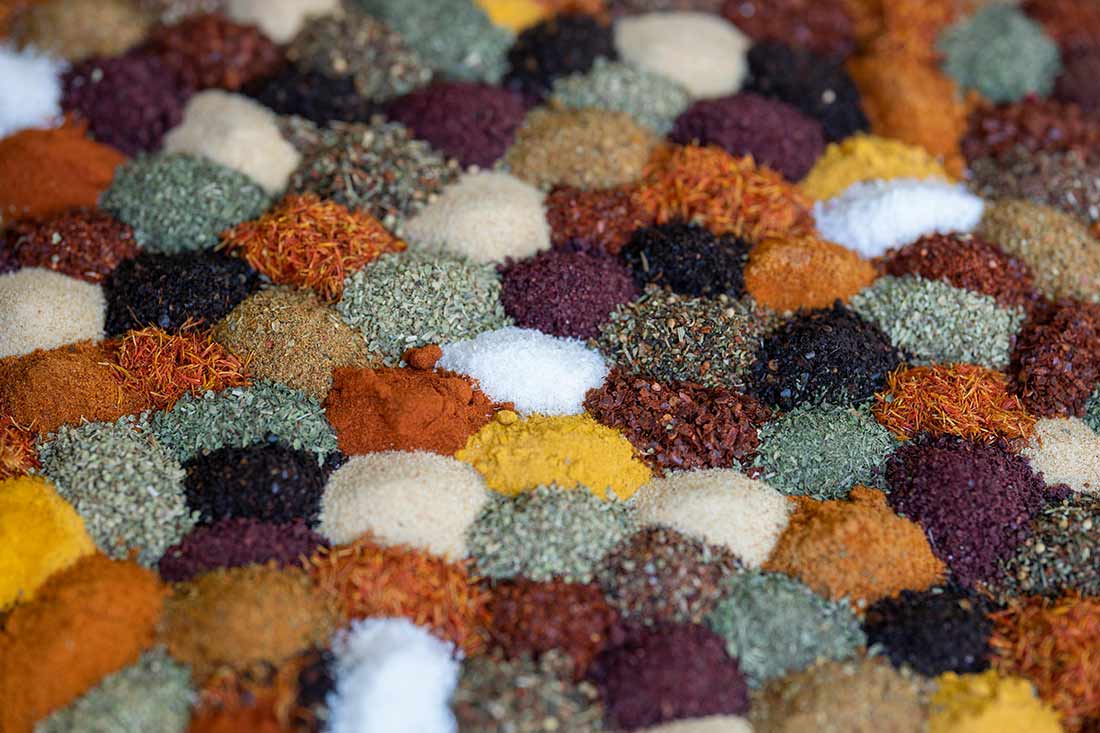
CLOVES
Zanzibar, often referred to as the “Spice Island,” gained its reputation as a global spice hub primarily due to cloves. These aromatic flower buds, harvested from the clove tree (Syzygium aromaticum), are prized for their intense flavor and medicinal properties.
Zanzibar’s ideal climate and fertile soil provide the perfect conditions for cultivating cloves. This makes it one of the world’s largest producers. Cloves are featured prominently in Zanzibari cuisine. They add warmth to savory dishes like pilau (spiced rice). They lend their distinctive aroma to beverages like spiced tea.
CINNAMON
Cinnamon, with its sweet and woody flavor profile, is another prized spice that hails from Tanzania. It is derived from the inner bark of the cinnamon tree (Cinnamomum verum). This spice is valued for its versatility in both sweet and savory dishes.
In Zanzibar, cinnamon is used to infuse flavor into desserts such as cassata (a traditional cake) and in savory dishes like biryani. Beyond its culinary uses, cinnamon is also cherished for its purported health benefits. They include antioxidant properties and the potential to lower blood sugar levels.
BLACK PEPPER
While not native to Tanzania and Zanzibar, black, green, and white peppers hold a significant place in the region’s spice trade and culinary repertoire. Introduced to the region centuries ago, black pepper quickly became a prized commodity valued for its pungent flavor and culinary versatility. Today, Tanzania is one of the leading producers of black, green, and white pepper in Africa. The southern highlands region is a major cultivation area.
Zanzibar, with its historical role as a spice trading hub, continues to showcase black pepper in its traditional dishes. Pepper adds depth and heat to soups, stews, and marinades.
CARDAMOM
Cardamom, with its distinctively warm and citrusy aroma, is yet another prized spice cultivated in Tanzania. This fragrant spice, derived from the seeds of various plants in the genera Elettaria and Amomum, is highly valued for its culinary and medicinal properties.
In Zanzibar, cardamom is a key ingredient in desserts like kashata (coconut and cardamom sweets). It is also used to flavor beverages such as Kahawa ya Tangawizi (ginger coffee). Tanzanian cardamom, known for its bold and complex flavor profile, is sought after by chefs and spice enthusiasts worldwide.
NUTMEG AND MACE
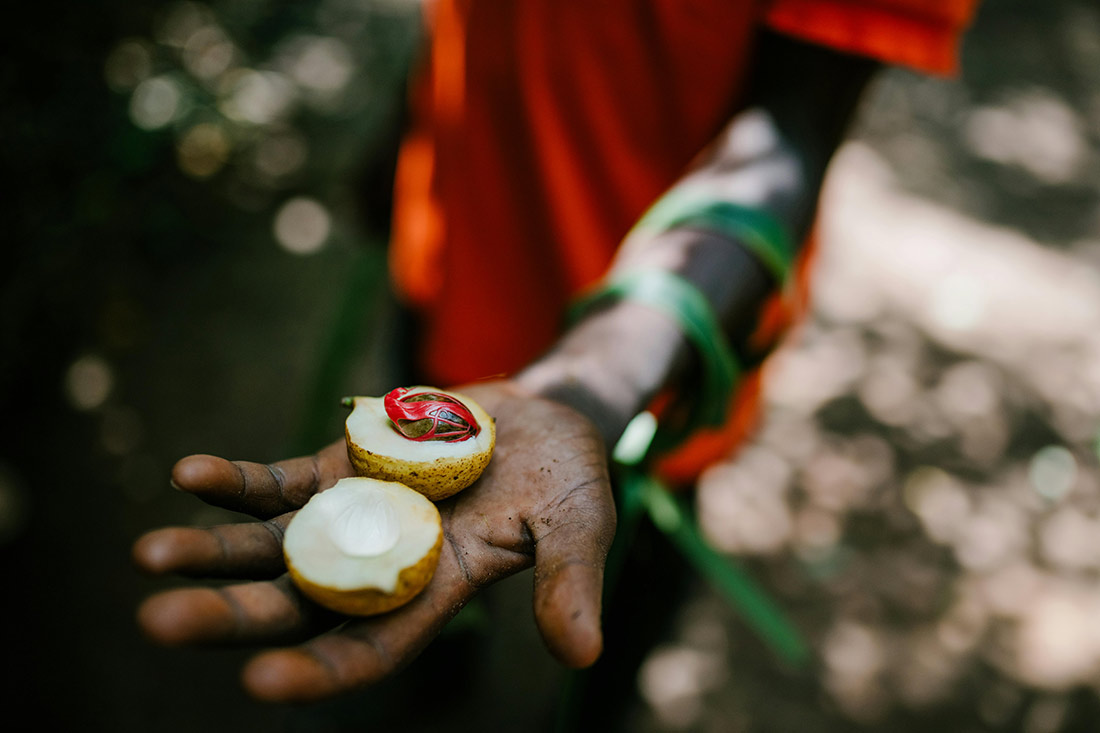
Nutmeg and mace are derived from the same tropical evergreen tree (Myristica fragrant). These spices are synonymous with warmth and depth of flavor. While not as prominent as cloves or cinnamon, nutmeg and mace are cultivated in Tanzania and Zanzibar. Nutmeg adds a unique and exotic touch to both sweet and savory dishes.
Zanzibari cuisine often incorporates nutmeg and mace into dishes such as biryani and curries. Their aromatic nuances elevate the flavor profile and create a memorable dining experience.
GINGER
Ginger, with its zesty and pungent flavor, is a staple spice in Tanzanian and Zanzibari cuisine. This versatile root, known for its medicinal properties and distinctive taste, is used in a variety of dishes to add a spicy kick and aromatic warmth.
In Zanzibar, ginger features prominently in beverages like ginger tea and in savory dishes such as fish curry. Its zingy flavor complements the richness of the dish, creating a harmonious blend of taste sensations.
CHILIES
Chilies, with their fiery heat and vibrant color, are essential spices in Tanzanian and Zanzibari cooking. Whether fresh or dried, these potent peppers are used to add heat and depth of flavor to a wide range of dishes. They are added to soups and stews as well as sauces and marinades.
In Zanzibar, chilies are often incorporated into dishes like pilau and grilled seafood. Their intense heat enhances the overall flavor profile and adds a spicy kick.
On the Scoville Scale, the Tanzanian Chilies have a heat unit (SHU) rating of 2,500–8,000.
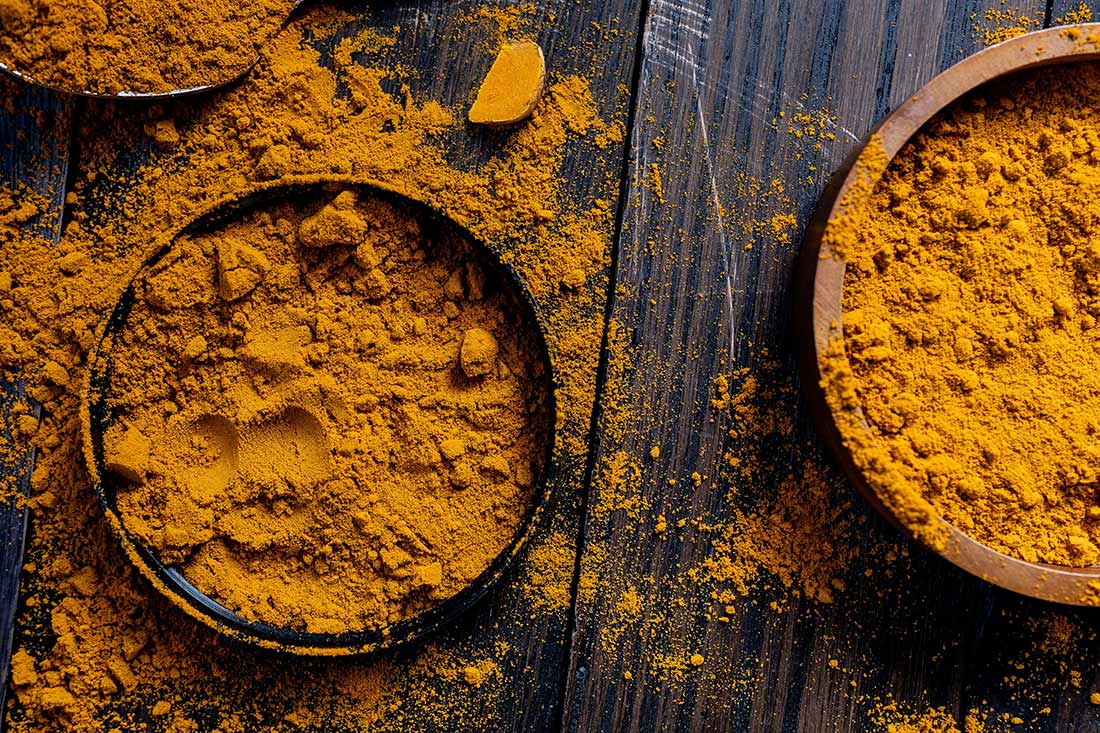
TURMERIC
Turmeric, known for its vibrant golden hue and earthy flavor, is a beloved spice in Tanzanian and Zanzibari cuisine. It comes from the root of the Curcuma longa plant. It is prized for both its culinary uses as well as its medicinal properties.
In Zanzibar, turmeric is used to add color and depth of flavor to dishes like coconut fish curry and vegetable stir-fries. It adds a warm and peppery note to complement the other spices and ingredients.

VANILLA BEANS
Vanilla beans, with their intoxicating aroma and sweet flavor, are a luxurious addition to Tanzanian and Zanzibari cuisine. While not native to the region, Tanzania has emerged as a leading producer of vanilla beans. Of note is the prized Bourbon variety.
Zanzibar, with its historical ties to the spice trade, has also cultivated vanilla beans for centuries. These fragrant pods are used in desserts like ice cream, custards, and cakes. They have an unmistakable aroma and flavor, adding a touch of indulgence to culinary creations.
FINAL THOUGHTS
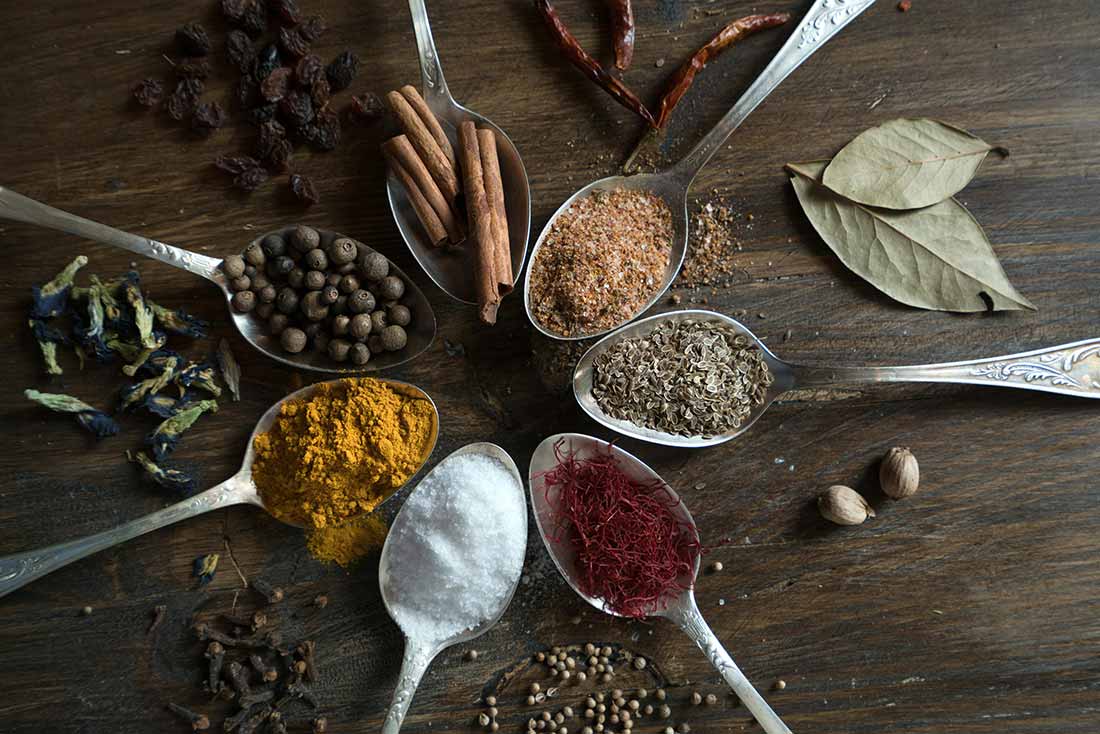
In conclusion, the spices that hail from Tanzania and Zanzibar are not merely ingredients but rather symbols of a rich cultural heritage and a vibrant culinary tradition. From the fiery allure of cloves to the exotic fragrance of cardamom, and the zesty freshness of ginger to the earthy warmth of turmeric, each spice tells a story of centuries-old trade routes, cultural exchange, and culinary innovation. Whether enjoyed in a traditional Zanzibari dish or incorporated into global cuisines, these aromatic treasures continue to captivate and inspire food enthusiasts around the world, inviting them to savor the flavors of Tanzania and Zanzibar with each tantalizing bite.
Original article posted on Kilimanjarosunrise.com
What is a Budget Operator on Kilimanjaro and Why Should You Avoid Them
Kilimanjaro, Africa’s tallest peak and one of the most sought-after summits in the world, entices adventurers with its majestic beauty and unparalleled challenge. As climbers begin planning their Kilimanjaro trek, one crucial decision must be made—what company do you climb with? First of all, there are three tiers of tour operators. The luxury operator costs upwards of $5,000 per person. The mid-range operator costs between $2,700 to $3,500 per person and the budget operator costs roughly $2,500 per person. While budget operators may initially appear appealing for their lower prices, a closer examination reveals significant risks that can compromise safety, quality, and the overall experience. Here’s why opting for a budget operator on Kilimanjaro might not be the wisest choice.

How They Cut Costs
It’s important to note that park fees and permits for accessing Kilimanjaro are standardized across all operators. So where do the budget operators cut the costs?
Budget operators on Kilimanjaro often cut costs in several ways that compromise the safety and well-being of their porters and clients.
One common practice is reducing the number of meals provided to porters each day. Giving them one meal instead of three. This deprives them of essential nutrition during their strenuous work.
Additionally, these operators may skimp on properly equipping porters with adequate gear, such as proper footwear and clothing. This also puts them at risk of injury and discomfort.

Furthermore, budget operators may rely on used, damaged, or homemade tents for accommodation. This sacrifices the comfort and safety of their clients. Tents may leak when it’s raining or fall over when it is windy.

Safety Concerns
Ensuring climbers’ safety should be the top priority for any tour operator on Kilimanjaro. However, budget operators often cut corners on essential safety measures to reduce costs. They may employ inexperienced guides, provide substandard equipment, or neglect proper altitude acclimatization protocols. Such compromises significantly increase the risk of accidents, altitude sickness, and other health hazards during the ascent.

Lack of Experience and Expertise
Successfully summiting Kilimanjaro requires extensive experience, knowledge, and expertise in high-altitude trekking. Budget operators, driven primarily by cost-cutting motives, may lack the seasoned guides and support staff necessary to effectively navigate the mountain’s challenges. Inexperienced guides may struggle to handle emergencies, make sound decisions in adverse conditions, or provide adequate assistance to climbers, jeopardizing the entire expedition.
Poor Quality Services

While budget operators may offer enticingly low prices, they often compromise on the quality of services provided. Accommodations, meals, and equipment provided by budget operators may be of inferior quality, detracting from the overall experience and comfort of climbers.
They do not provide three hot meals a day. Instead, they distribute dry, bland box lunches to their clients.
Additionally, budget operators may overcrowd routes and campsites to maximize profits. This results in a less enjoyable and more chaotic trekking experience, leading to lost clients. Our guides have gone out in the middle of the night to find other companies lost hikers.
Environmental and Ethical Concerns

Responsible tourism and environmental sustainability are crucial considerations when exploring natural wonders like Kilimanjaro. However, budget operators may prioritize profit over environmental conservation and ethical practices. They may engage in practices such as littering, overexploitation of natural resources, or inadequate waste management. These destructive practices contribute to environmental degradation. Which in turn harms the delicate ecosystems of the mountain.
Limited Support and Resources
Conquering Kilimanjaro is a formidable undertaking that requires comprehensive logistical support and resources. Budget operators, constrained by their low prices, may lack the necessary infrastructure, emergency support systems, and medical facilities to ensure a smooth and safe ascent. In the event of emergencies or unforeseen circumstances, climbers with budget operators may find themselves ill-equipped and stranded on the mountain without adequate assistance.
Kilimanjaro Porters Assistance Project

The practice of mistreating the porters occurs frequently by budget operators. For this reason, The Kilimanjaro Porters Assistance Project (KPAP) was created. KPAP is a non-profit organization dedicated to improving the working conditions and welfare of porters on Mount Kilimanjaro. Founded in 2003, KPAP collaborates with local tour operators, guides, and porters to advocate for fair wages, ethical treatment, and proper equipment for porters.
Through their initiatives, KPAP provides training on mountain safety, health, and environmental conservation, empowering porters with essential skills and knowledge.
They also conduct regular monitoring and evaluations to ensure compliance with ethical standards and guidelines set forth by the International Mountain Explorers Connection (IMEC) and the Kilimanjaro National Park Authority.
By promoting fair labor practices and advocating for the rights of porters, KPAP plays a crucial role in fostering a sustainable and responsible climbing industry on Mount Kilimanjaro.
Final Thoughts
While the allure of cost savings may tempt some climbers to opt for budget operators on Kilimanjaro, the inherent risks and compromises associated with such choices far outweigh the potential savings. Climbing Kilimanjaro is a once-in-a-lifetime experience that deserves careful planning, investment in safety, and quality support from reputable and experienced tour operators. By prioritizing safety, expertise, and responsible tourism practices, climbers can ensure a fulfilling and memorable journey to the Roof of Africa, free from unnecessary risks and setbacks.
The best place to start your planning is by choosing a KPAP operator. You can find them here. Better yet, just climb with Kilimanjaro Sunrise since we are a member.
Original article posted on Kilimanjarosunrise.com
What is the Death Rate on Kilimanjaro?
Climbing Mount Kilimanjaro has become an increasingly popular adventure for thrill-seekers and nature enthusiasts alike. Rising majestically in Tanzania, Africa, Kilimanjaro’s allure lies not only in its breathtaking vistas but also in the challenge it presents to climbers.
However, amidst the excitement and anticipation, there’s a looming question: How dangerous is climbing and what is the death rate on Kilimanjaro?

Specifics
Contrary to popular belief, the mortality rate associated with climbing Kilimanjaro is lower than commonly assumed. While there have been tragic incidents, a closer examination of the statistics sheds light on the reality of the risks involved.

According to a study, the mortality rate for climbers on Kilimanjaro is approximately 13.6 deaths per 100,000 climbers. Applying this rate to the estimated 30,000 to 50,000 climbers who ascend the mountain annually, the number of deaths averages around 4 to 7 per year.
This figure contradicts the oft-cited claim of 10 deaths annually, indicating that climbing Kilimanjaro may not be as perilous as portrayed.
Despite this reassurance, prospective climbers must understand the factors contributing to these fatalities. While Kilimanjaro isn’t known for technical climbing challenges like steep rock faces or treacherous ice fields, it presents its own set of dangers.
Altitude Sickness
Altitude-related illnesses pose the most significant risk to climbers. As altitude increases, the air becomes thinner, leading to decreased oxygen levels. This can result in altitude sickness, with symptoms ranging from headaches and nausea to more severe conditions like pulmonary or cerebral edema. Failure to acclimatize properly or ascending too quickly are common causes of altitude-related fatalities on Kilimanjaro.
Weather
Extreme weather conditions also play a role in the mountain’s risks. Kilimanjaro’s climate can be unpredictable, with temperatures ranging from scorching heat at lower altitudes to freezing cold at higher elevations. Sudden storms, high winds, and heavy precipitation can pose challenges, particularly on exposed sections of the climb.

Health and Age
Additionally, individual factors such as age, fitness level, and pre-existing medical conditions can influence a climber’s susceptibility to these risks. Proper preparation, including physical conditioning, altitude acclimatization, and selecting a reputable guiding company, is essential to mitigate these dangers.
Preparation
While climbing Kilimanjaro carries inherent risks, it’s essential to approach the endeavor with respect for the mountain and a thorough understanding of the challenges involved. By prioritizing safety, proper planning, and responsible decision-making, climbers can minimize the likelihood of accidents and ensure a memorable and rewarding experience on Africa’s tallest peak.
Final Thoughts
In conclusion, while the mortality rate associated with climbing Mount Kilimanjaro may be lower than commonly believed, climbers need to recognize and prepare for the inherent risks involved. By understanding the factors contributing to fatalities and taking appropriate precautions, adventurers can embark on the journey to Kilimanjaro with confidence and safety as their top priorities.















